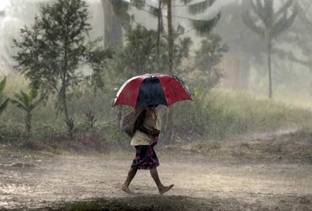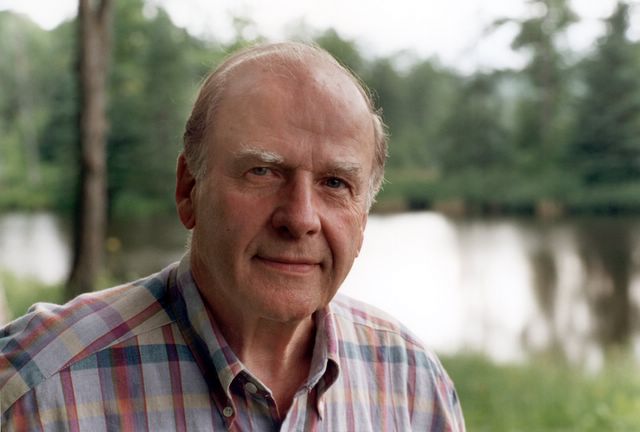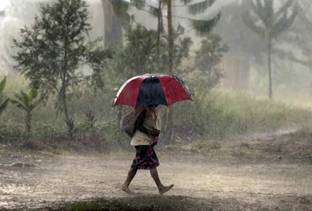As climate change impacts ramp up over the coming years, we have a serious choice to make. We can try to run in between the raindrops, or we can figure out how to build the equivalent of sturdy, innovative umbrellas.
 Millions more people, mostly living in the world’s poorest regions, are expected to be directly affected by climate change in the next decade, Oxfam says.Courtesy Oxfam AmericaWe are facing this choice because even stopping greenhouse gas emissions today won’t stop the warming due to happen in the next couple of decades. And that global warming comes on top of the vulnerability to climate-related disasters facing many of the poorest people around the world.
Millions more people, mostly living in the world’s poorest regions, are expected to be directly affected by climate change in the next decade, Oxfam says.Courtesy Oxfam AmericaWe are facing this choice because even stopping greenhouse gas emissions today won’t stop the warming due to happen in the next couple of decades. And that global warming comes on top of the vulnerability to climate-related disasters facing many of the poorest people around the world.
This week, a new Oxfam report forecasts the number of people affected by climate-related humanitarian disasters to rise more than 50 percent by 2015, to an average of 375 million a year, threatening to overwhelm emergency response and humanitarian aid systems.
This means more suffering and more poverty, and we are already seeing these consequences in the communities where Oxfam works.
When Cyclone Sidr hit Mahmouda’s village in Bangladesh, an enormous wave washed away Mahmouda’s house, along with her four year old son, her brother and her two sisters. When severe rains led to dramatic floods in India, Balkru Behera was able to save his life but lost everything else and spent days without food. When Hurricane Katrina came over Biloxi, Mississippi, Sharon Hanshaw lost her house and beauty shop in a matter of minutes.
For people like Mahmouda, Balkru, and Sharon who do not immediately lose their lives in climate related catastrophes, the aftermath becomes a daily struggle for survival, dignity and a future. This struggle is the reality for over a quarter of a billion women and men every year, and it’s only going to get worse in the near, not just distant, future as climate change and environmental mismanagement create a proliferation of droughts, landslides, floods and other disasters. And as disasters drive more people from their homes and strip them of their livelihoods and family support structures, it could mean more conflicts.
Any particular weather-related event cannot specifically be attributed to climate change, but its impacts stand as a tragic warning sign of the potential consequences of global warming if we fail to build resilience to its impacts.
Developing innovative and effective adaptation strategies for vulnerable communities, both here at home and around the world, are a necessity. With this kind of assistance, poor people can design and implement their own climate solutions, such as drought-resistant seeds and food banks in times of shortage, coastal tree barriers and raised homes during floods, and mosquito nets and health surveillance to prevent the spread of disease.
But building resilience in the face of climate change is also an economic opportunity. Innovative adaptation solutions can be an integral part of a global transition toward a clean and climate-resilient economy. From developing climate-resilient housing, restoring natural storm buffers, and buttressing sustainable transport systems in the United States to improving water systems and agricultural practices around the world, adaptation can provide substantial economic benefits.
Already, we are seeing a need for and development of new markets for technologies and services to help communities build resilience to climate change impacts, such as water pumps and filtration devices, irrigation equipment, early warning systems to forecast storms, flood, and drought, weather-indexed micro-insurance programs, and renewable energy systems to support adaptive strategies.
Beyond promoting a wave of innovation, climate-resilient strategies can also save money, as taking preventive action now will pay for itself many times over – more than four times over according to recent studies.
Starting to dramatically reduce our greenhouse gas emissions is of course crucial. But investing in community resilience, especially for the most vulnerable, must also be a cornerstone of any American effort on climate change. As we begin to invest in a clean energy future, comprehensive climate legislation should help spur new innovations that will save lives worldwide, provide jobs, and pave the way towards a climate-resilient future.
Umbrellas, anyone?



